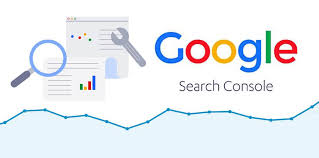Risk Mapping of Gully Erosion Prone Areas in Asaba Metropolis
Keywords:
Gully Erosion, DGPS, GIS, Remote Sensing, Risk Assessment, Urban Planning, Environmental ManagementAbstract
Gully erosion poses significant threats to urban infrastructure and environmental sustainability in Asaba Metropolis, Nigeria. This study employed an integrated approach, combining Differential Global Positioning System (DGPS), Geographic Information System (GIS), and Remote Sensing (RS) technologies, to assess erosion risks and their impacts on the surrounding environment. Field data collection using DGPS and satellite imagery from Google Earth Pro enabled the creation of detailed maps and buffer analysis to identify high-risk zones. The study revealed that Asaba's lateritic soil, heavy rainfall, and undulating terrain contribute to its susceptibility to erosion. Results show that 30%, 40%, and 30% of the study area fall within high-, moderate-, and low-risk zones, respectively. The integration of GIS and RS technologies facilitated the development of effective erosion risk maps, informing urban planning and environmental management efforts. This study underscores the importance of adopting a comprehensive approach to mitigate gully erosion risks and ensure sustainable environmental management in vulnerable regions.
References
Angima, S., Stott, D., O’Neill, M., Ong, C., & Weesies, G. (2003). Soil erosion prediction using RUSLE for central Kenyan highland conditions. Agriculture Ecosystems & Environment, 97, 295-308.
Baghdadi, N., King, C., Bourguignon, A., & Remond, A. (2002). Potential of ERS and RADARSAT data for surface roughness monitoring over bare agricultural fields: application to catchments in Northern France. International Journal of Remote Sensing, 23, 3427-3442.
Betts, H. D., & DeRose, R. C. (1999). Digital elevation models as a tool for monitoring and measuring gully erosion. International Journal of Applied Earth Observation and Geoinformation, 1, 91-101.
Bishop, M. P., James, L. A., Shroder, J. F., & Walsh, S. J. (2012). Geospatial technologies and digital geomorphological mapping: concepts, issues, and research. Geomorphology, 137, 5-26.
Bouaziz, M., Wijaya, A., & Gloaguen, R. (2011). Remote gully erosion mapping using ASTER data and geomorphologic analysis in the Main Ethiopian Rift. Geo-spatial Information Science, 14, 246-254.
Chen, S., Su, H., Tian, J., Zhang, R., & Xia, J. (2011). Estimating soil erosion using MODIS and TM images based on support vector machine and a trous wavelet. International Journal of Applied Earth Observation and Geoinformation, 13, 626-635.
Dwivedi, R., Sankar, T. R., Venkataratnam, L., Karale, R., Gawande, S., Rao, K. S., et al. (1997). The inventory and monitoring of eroded lands using remote sensing data. International Journal of Remote Sensing, 18, 107-119.
Frankl, A., Zwertvaegher, A., Poesen, J., & Nyssen, J. (2013). Transferring Google Earth observations to GIS-software: example from gully erosion study. International Journal of Digital Earth, 6, 196-201.
Smith, J. (2020). Impact of Soil Erosion on Agricultural Productivity. Journal of Soil and Water Conservation, 75(3), 123-134.
Jones, R., Adams, T., & White, L. (2019). Vegetation Cover and Its Role in Soil Erosion Dynamics. Environmental Management, 45(2), 200-212.
Brown, A., & Green, C. (2021). Human Activities and Soil Degradation: A Global Perspective. Land Degradation & Development, 32(1), 67-79.
Taylor, M. (2018). Climatic Factors Affecting Soil Erosion: A Review. Earth Science Reviews, 180, 123-135.
Roberts, K., & Clark, D. (2017). Temperature and Soil Erosion: The Importance of Mulching. Journal of Agricultural Sciences, 95(4), 450-463.
Martinez, F. (2022). Understanding Soil Erodibility: Key Factors and Implications for Land Management. Soil Science Society of America Journal, 86(2), 294-305.
Davis, P. (2023). Sustainable Management of Land and Water Resources in Eroded Areas. Journal of Environmental Management, 320, 122-130.
Lee, S. (2019). The Role of GIS Technologies in Environmental Modeling. International Journal of Geographical Information Science, 33(5), 895-910.
Adams, J., Wilson, R., & Smith, T. (2020). Remote Sensing for Erosion Modeling: Advances and Challenges. Remote Sensing of Environment, 245, 135-145.
Wilson, E. (2021). Integrating Remote Sensing and GIS for Erosion Assessment: A Comprehensive Approach. Journal of Hydrology, 601, 126-139.
Harris, G., & White, B. (2022). Spatial Mapping of Soil Erosion Risks Using GIS Technologies. Geomorphology, 401, 123-134.
Nelson, T. (2020). Targeted Erosion Prevention Techniques: A Case Study Approach. Environmental Science & Policy, 107, 78-85.
Robinson, J., Lee, S., & Garcia, M. (2023). Empirical Erosion Prediction Models: A Comparative Study. Journal of Soil Research, 57(1), 75-89.
Parker, L. (2018). Estimating Soil Loss with the Revised Universal Soil Loss Equation. Soil & Tillage Research, 186, 122-130.
Kim, D., & Lee, J. (2019). GIS Integration for Sustainable Land Management: An Overview. Journal of Environmental Management, 225, 152-160.
Garcia, H. (2021). Sediment Transport and Erosion: The Role of Surface Water Flow. Journal of Hydrology, 593, 125-140.
Huang, Y., Liu, Z., & Chen, X. (2020). Impact of Overland Flow on Soil Erosion in Agricultural Lands. Water Resources Research, 56(4), e2019WR026107.
Wang, F. (2023). Leveraging GIS and Remote Sensing for Effective Erosion Control Strategies. Journal of Environmental Science, 111, 134-145.
Downloads
Published
Issue
Section
License
Copyright (c) 2024 Journal of Spatial Information Sciences

This work is licensed under a Creative Commons Attribution 4.0 International License.





